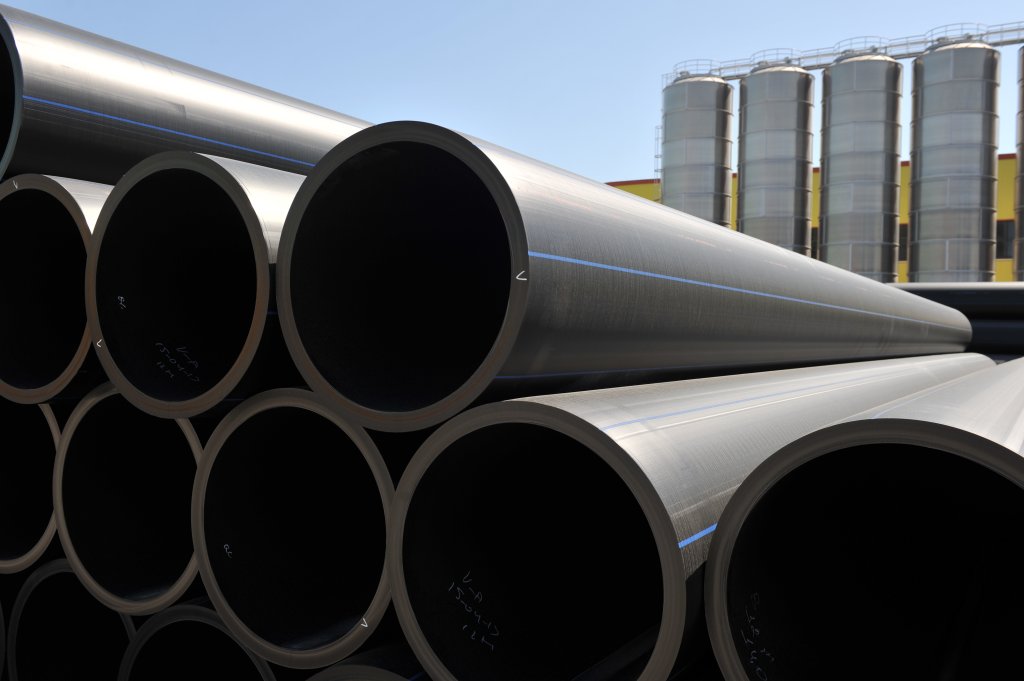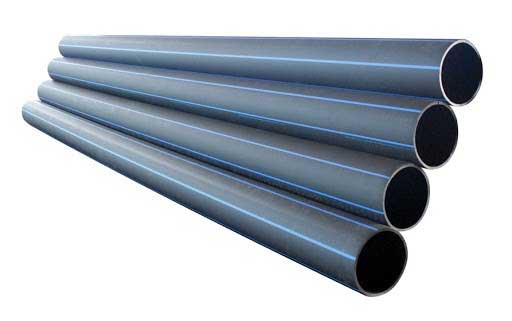Where to Source Midland TX HDPE Pipe Fittings in Stock for Oilfield Success
Explore the Manufacturing Refine Behind High-Quality HDPE Pipe and Its Applications
The production procedure of top notch HDPE pipelines is elaborate and systematic. It starts with the option of raw materials that improve performance. Following this, ethylene goes through polymerization to develop material, which is then shaped via extrusion. Quality assurance is vital, making sure that the final product satisfies rigid standards. The journey of HDPE pipes doesn't finish with manufacturing. Their applications throughout different industries disclose a more comprehensive relevance worth analyzing.
Recognizing HDPE: Residences and Advantages

High-density polyethylene (HDPE) is a functional polycarbonate known for its resilience and resistance to various environmental aspects. This material exhibits exceptional tensile strength, making it ideal for demanding applications. Its low-density framework contributes to a lightweight product, facilitating ease of taking care of and installment. HDPE likewise showcases exceptional resistance to chemicals, which lessens deterioration when revealed to rough substances.
The material's reduced moisture absorption further boosts its longevity, making it excellent for use in pipes and tank. Additionally, HDPE is resistant to ultraviolet (UV) radiation, guaranteeing that products preserve their integrity even when revealed to sunshine. Its flexibility allows for the production of detailed shapes without compromising strength. The green nature of HDPE, usually acquired from recycled products, includes to its charm, advertising lasting practices in production. In general, these homes and advantages make HDPE a recommended selection for different industrial and consumer applications.
Resources Choice for HDPE Production
The selection of basic materials for HDPE production is necessary to validate the end product fulfills the preferred specifications and high quality requirements. High-density polyethylene (HDPE) is largely created from polymerized ethylene, stemmed from nonrenewable fuel sources such as gas or petroleum. The quality of these feedstocks greatly influences the mechanical and thermal residential properties of the final HDPE.
Ingredients likewise play a substantial function in boosting HDPE's efficiency, including anti-oxidants, UV stabilizers, and colorants, which improve longevity and resistance to ecological aspects. The choice procedure need to take into consideration not just the chemical structure of the raw materials yet additionally their processing features to ensure efficient manufacturing.
The sourcing of raw materials must focus on sustainability and conformity with ecological regulations, as responsible practices are essential in today's market. Inevitably, cautious basic material option lays the structure for creating top quality HDPE pipelines suitable for diverse applications.
The Extrusion Process: Forming HDPE Pipe
The extrusion procedure plays a vital role in forming HDPE pipelines, beginning with precise product prep work methods that guarantee ideal circulation and consistency. Equally crucial is the design of the die, which directly affects the final measurements and surface top quality of the pipe. Together, these variables contribute greatly to the effectiveness and top quality of HDPE pipeline manufacturing.
Material Preparation Techniques
Efficient production of HDPE pipelines begins with thorough material preparation strategies, especially the extrusion procedure. During this phase, high-density polyethylene material is initial dried to eliminate moisture, ensuring optimal flow attributes. The resin is then fed into the extruder, where it undergoes heating and melting, changing into a thick state. This heating process is thoroughly controlled to maintain the material's integrity and efficiency. The molten HDPE is compelled through a die, shaping it into a constant pipeline form. Appropriate temperature level management throughout extrusion is important, as it directly impacts the material's buildings and the last item high quality. When shaped, the HDPE pipeline is cooled down and reduced to specified sizes, all set for subsequent processing and applications.
Die Design Importance
Precision in die style plays a vital duty in the extrusion process of HDPE pipelines. The die acts as the last shaping tool, straight affecting the pipe's measurements, wall density, and surface coating. A properly designed die guarantees consistent product flow, reducing issues such as abnormalities and weak points. The geometry of the die must be enhanced to fit the certain homes of HDPE, including its thickness and thermal actions during extrusion. Additionally, the cooling rate of the material as it passes with the die can noticeably impact the pipe's structural stability. Spending in sophisticated die innovation is important for producers aiming to generate top notch HDPE pipes that satisfy sector standards and customer expectations.
Quality Assurance Steps in HDPE Production
Numerous elements affect the quality of HDPE pipe production, effective quality control steps are critical to assure uniformity and dependability in the final product (Texas hdpe pipe manufacturer). Trick high quality control practices consist of strenuous product evaluation, validating that the raw polyethylene fulfills recognized criteria for pureness and thickness. During the extrusion process, criteria such as temperature, stress, and cooling time are very closely monitored to keep dimensional precision and architectural stability
Additionally, post-production testing is essential; makers usually carry out hydrostatic examinations to examine the pipeline's strength and resistance to stress. Visual inspections for surface area flaws further improve high quality guarantee. Qualification from pertinent criteria organizations, like ASTM or website ISO, provides an extra layer of reputation. By executing these complete quality control procedures, producers can minimize defects, boost efficiency, and ensure that the HDPE pipes meet the specific demands of different applications, inevitably leading to consumer satisfaction and rely on the product.
Applications of HDPE Pipeline Throughout Industries
HDPE pipes are used throughout different sectors because of their toughness and flexibility. In water distribution systems, they guarantee effective shipment, while in wastewater monitoring, they supply trusted options for waste transport. Furthermore, farming watering networks benefit from HDPE's resistance to corrosion and versatility, making it an excellent option for modern-day farming methods.

Water Distribution Equipments
A substantial variety of industries depend on high-density polyethylene (HDPE) pipes for effective water distribution systems. Recognized for their longevity and resistance to corrosion, HDPE pipelines are widely utilized in metropolitan water supply networks, agricultural watering, and industrial applications. Their light-weight nature helps with very easy handling and setup, decreasing labor prices and time. In addition, HDPE pipelines can accommodate different stress levels, making them suitable for both reduced and high-pressure systems. Texas hdpe pipe manufacturer. The adaptability of the product permits seamless assimilation right into existing infrastructure, minimizing the requirement for substantial excavation. HDPE's resistance to chemical seeping assurances that the water supplied stays risk-free and clean, making it an optimal option for preserving the high quality of potable water across different markets.
Wastewater Administration Solutions
Efficient water distribution systems additionally lead the way for cutting-edge wastewater administration solutions, where high-density polyethylene (HDPE) pipes play a significant function. Prominent for their durability and resistance to deterioration, HDPE pipes are perfect for transporting wastewater in numerous setups. Their flexibility enables simple installment in complex environments, reducing the requirement for extensive excavation. In addition, HDPE's smooth interior surface area decreases rubbing, boosting circulation rates and effectiveness. These pipelines are additionally resistant to chemical leaching, ensuring that pollutants do not compromise the surrounding environment. Industries, towns, and therapy facilities significantly depend on HDPE pipelines for their dependability and longevity, making them a preferred choice for modern-day wastewater monitoring systems. This versatility emphasizes the critical value of HDPE pipes across countless applications.
Agricultural Watering Networks
Agricultural irrigation networks profit substantially from making use of high-density polyethylene (HDPE) pipes, which provide efficient and dependable water distribution to crops. HDPE pipelines are lightweight, making them easy to transfer and install, while their versatility enables for numerous setups in diverse surfaces. These pipelines show exceptional resistance to deterioration, chemicals, and UV radiation, guaranteeing durability in severe farming environments. In addition, their smooth interior surface decreases friction loss, optimizing water flow and decreasing power costs related to pumping. The durability of HDPE pipes, frequently exceeding half a century, adds to reduce upkeep and substitute expenses. Farmers progressively rely on HDPE pipes to enhance watering performance and promote sustainable agricultural practices, eventually leading to improved plant returns and resource preservation.

Future Fads in HDPE Pipe Innovation
As the need for sustainable and efficient facilities grows, developments in HDPE pipe technology are poised to change different industries. Emerging patterns include the integration of smart innovations, such as sensors and IoT capabilities, which facilitate real-time tracking of pipeline problems, lowering upkeep prices and stopping leaks. Furthermore, the advancement of innovative manufacturing techniques, such as 3D printing, is enabling the production of complex, customized pipe layouts that deal with specific task requirements.
The emphasis on recycling and circular economy practices is driving the advancement of HDPE pipelines made from recycled products, boosting sustainability. Improved jointing techniques, such as electro-fusion and mechanical fittings, are also enhancing installment efficiency and reliability. The growing emphasis on environmental laws is pushing producers to adopt greener production procedures, making sure that HDPE pipes not only fulfill sector criteria yet additionally promote a more lasting future for framework advancement.
Regularly Asked Questions
How Does HDPE Contrast to Various Other Plastic Materials?
HDPE outmatches several various other plastic materials regarding longevity, chemical resistance, and versatility. Its reduced thickness and high tensile toughness make it suitable for different applications, commonly exceeding options in both performance and durability.
What Are the Ecological Effects of HDPE Manufacturing?
The ecological influences of HDPE manufacturing consist of greenhouse gas discharges, power consumption, and possible contamination from manufacturing procedures. Furthermore, inappropriate disposal can result in dirt and water contamination, increasing issues concerning long-term environmental effects.
Can HDPE Water Lines Be Recycled?
Yes, HDPE pipelines can be recycled. Numerous facilities approve utilized HDPE for processing, changing it into brand-new products. This reusing adds to sustainability efforts, decreasing plastic waste while preserving resources and power in the production cycle.
What Is the Life-span of HDPE Pipeline?

Just How Do Temperature Variations Affect HDPE Pipeline Performance?
Temperature level variations greatly affect HDPE pipeline efficiency, influencing flexibility and toughness. Heats can bring about softening, while reduced temperature levels might trigger brittleness, ultimately influencing the pipe's toughness and suitability for different applications in diverse atmospheres.